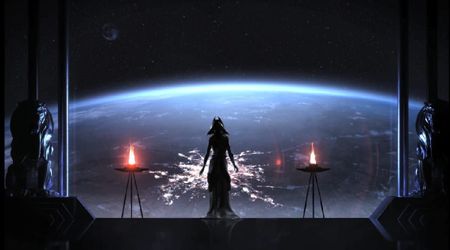'Lost in Space' Season 2 Episode 6: Missed opportunity for the best sci-fi horror scenario ever

‘Lost in Space’ season two’s sixth episode ‘Severed’ saw perhaps the most horrific of worst-case scenarios when it comes to sci-fi space adventures. On the planet over which the Resolute is stationed, and where the crew had been stationed for seven months, the terrain was harsh. It was dusty, water was limited, and the creatures were hostile.
But that is regular thoroughfare for science fiction -- after all, what's the fun in finding planets where everything is perfect, right? The problem was what was in the water. As the Robinson family and the crew of the Resolute realized a little too late, something in the water was corroding the metal.
It wasn’t rust. After all, rust takes a while to affect and only affects ferrous objects. This affected even titanium -- with which all their equipment was built -- and metastasized faster than anything they had ever seen. According to their experiments, they found that it was “some kind of self-perpetuating subatomic oxidizing catalyst” and through the blood of one of the crew members, it had made its way onto the Resolute.
And this is what a nightmare on a space adventure is supposed to look like: not an alien race, not evil villains, but the sheer force of nature that is too awesome to be comprehended. Imagine for a second the scariest part of Christopher Nolan’s ‘Interstellar’.
It wasn’t Dr. Mann (Matt Damon’s) betrayal. It wasn’t even the time slippage around Gargantua, the black hole. It was the waves of Dr. Miller’s planet that killed Doyle (Wes Bentley) and almost killed everyone else. The cruelty of natural forces is one that is always underappreciated, which leaves people vulnerable to its apathy.
Similarly, in ‘Lost in Space’, it is not the robots that pose the biggest threat -- even if the show’s writers would like us to believe so. It is the “self-perpetuating subatomic oxidizing catalyst” that can cripple them in hours and there is just no defeating it or reasoning with it or tricking it.
In a space expedition, metals are the basis for almost everything, from equipment to tools to the very ship that is transporting men and women. A natural object that can corrode and destroy that very metal just like that is the ultimate horror. It’s a pity that the show writers only chose to concentrate upon it in one episode. They even found a clever way of dealing with it. As a doctor amputates limbs to stop the spread of a disease, they severed a part of the ship to restrict this catalyst’s flow, giving the episode its title.
If only they had thought to make this the ultimate enemy instead of robots, the race against time would have been only that much more thrilling.
‘Lost in Space’ season two is available for viewing on Netflix.










